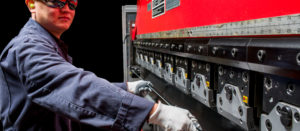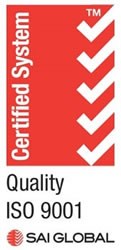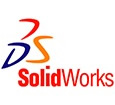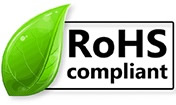Guide to safe bending procedures on your shop floor
One of the most dangerous machines on the shop floor can be a press brake. There are some safeguarding devices and best practices to keep operations safe.

A press brake requires a high degree of interaction from the operator. This machine has the potential to be extremely dangerous. That’s why operators must attend to training and safeguarding devices.
Points to be aware of
Bending operations carry many hazards. The most obvious is where the punch and the die meet – the point of contact, or pinch point. If something other than the material being bent gets in between the punch and the die, you probably would be looking at a catastrophic accident.
It’s very important that operators respect the machine and understand how it works. As it’s not just the obvious areas that have the potential to be dangerous. That’s why understanding the machine’s capabilities and potential make all the difference for safe operations.
Another less common hazard is a pinch injury with the back gauge as the back gauge moves in order to come into position for the next bend even without the pedal depressed. If a hand or arm was in or around the tools, it could get pinched.
Operators must pay special attention to not place their fingers or any part of the body between the punch and the tie, when they need to make any tool changes. This can be difficult when the operator is snapping the tool into place in the holder as it can be heavy, and the inclination is to hold it from underneath.
Operators are recommended to put the press brake into toll-change-mode, which disables any contact of the foot pedal, which activates the ram. Press brake workers should always be in tool- change mechanism when physically putting the tools in the machine. And for alignment, it’s important to put the machine in setup mechanism to bring the ram down safely.
Light curtains
This safety device is common on old machines, since technology has improved recently. Light curtain has a transmitter and receiver placed in each side of the press brake bed that emit an array of synchronized, parallel infrared lights beams in front of the work area.
If an operator or object break enters the beam field before the ram reaches the mute point, the machine stops and won’t continue until the obstruction is removed. Two types of light curtains are available, programmable and non programmable.
It is common that operators end up turning off the light curtain altogether, which makes the operation unsafe. A programmable light curtain allows for a part, say with a flange, to be inputted into a device, which cancels out the beams that would be obstructed by the part, allowing the ram to fully reach the mute point without stopping.
Bending small parts is another issue related to light curtains; it requires the operator to stand in front of the press brake and hold the parts while it’s being bent. With a light curtain this is impossible.
Point-of-contact Guarding
Laser active opto-electronic protective device (AOPD) is the newest technology for a press brake safety. This device is positioned under-neath or around the punch and a receiver transmits a laser light along the length of the press brake. This device was created to detect an object at the point of operation rather than just space in front of the brake, like a light curtain does.
This device allow operators to stand closer to the machine and handle the material at the same time the machine operates at high speed. The safety requirements for the laser guarding systems must be stricter as if there is any failure for stopping the machine, this system provide operator closer access to the point of operation.
The newer press brakes have the function to stop quickly because safety circuitry is built right in. If a finger is detected by the laser beam, it can stop the ram in a matter of microseconds.
Also, AOPD can be used in conjunction with light curtains, providing more flexibility. Light curtains, for example, are better for bending operations using multilength tooling, so the operator can just switch from laser protection to light curtain protection.
Safety Standards
CSA Z142-10 is the standard in Canada to meet compliance related to press brakes. The first standard was developed in 2002, so the currently, updated standard needed to account for advancement in safety devices, particularly AOPDs, as well as standardize practices and provide consistency with EN 12622 (Europe) and ANSI B11 (U.S).
This Standard covers the occupational health and safety requirements for all classes of presses, i.e., mechanical (servo, part-revolution clutch, and full-revolution clutch), hydraulic, and pneumatic, that are fitted with a slide/ram/platen (or slide/ram/platens), and with dies for blanking, cutting, trimming, drawing, punching, forming, bending, stamping, assembling, or processing metal or other materials, or for die proving and tryout.
This standard is based on three main points: optical detection area, automatic overrun monitoring, and safety speed.
Source: https://www.canadianmetalworking.com/article/fabricating/a-guide-to-bending-safety








